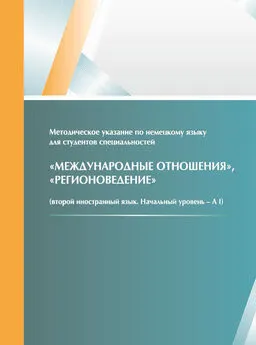Ольга Кравцова - Английский язык для специальных и академических целей: Международные отношения и зарубежное регионоведение. Часть 1
- Название:Английский язык для специальных и академических целей: Международные отношения и зарубежное регионоведение. Часть 1
- Автор:
- Жанр:
- Издательство:МГИМО-Университет
- Год:2015
- ISBN:978-5-9228-1210-8
- Рейтинг:
- Избранное:Добавить в избранное
-
Отзывы:
-
Ваша оценка:
Ольга Кравцова - Английский язык для специальных и академических целей: Международные отношения и зарубежное регионоведение. Часть 1 краткое содержание
Адресовано студентам четвертого курса факультетов и отделений международных отношений и зарубежного регионоведения.
Английский язык для специальных и академических целей: Международные отношения и зарубежное регионоведение. Часть 1 - читать онлайн бесплатно полную версию (весь текст целиком)
Интервал:
Закладка:
Musk was born in South Africa but emigrated to the United States via Canada in the 1990s. After completing degrees in economics and physics at the University of Pennsylvania, he moved to Silicon Valley, intent on addressing three of the most “important problems that would most affect the future of humanity”: the Internet, clean energy, and space. Having founded PayPal, Tesla Motors, and SpaceX, he has pulled off an astonishing triple. At the age of 42, he is worth an estimated $2.4 billion. Way to go!
But for every Musk, how many talented young people are out there who never get those crucial lucky breaks? Everyone knows that the United States has become more unequal in recent decades. Indeed, the last presidential election campaign was dominated by what turned out to be an unequal contest between “the 1 percent” and the “47 percent” whose votes Mitt Romney notoriously wrote off.
But the real problem may be more insidious 1than the figures about income and wealth distribution imply. Even more disturbing is the growing evidence that social mobility is also declining in America.
The distinction is an important one. For many years, surveys have revealed a fundamental difference between Americans and Europeans. Americans have a much higher toleration for inequality. But that toleration is implicitly conditional on there being more social mobility in the United States than in Europe.
But what if that tradeoff no longer exists? What if the United States now offers the worst of both worlds: high inequality with low social mobility? And what if this is one of the hidden structural obstacles to economic recovery? Indeed, what if current monetary policy is making the problem of social immobility even worse?
This ought to be grist for the mill 29 29 insidious — proceeding in a gradual, subtle way, but with very harmful effects
30 30 grist to/for the mill — anything that can be turned to profit or advantage
for American conservatives. But Republicans have flunked the challenge. By failing to distinguish between inequality and mobility, they have allowed
Unit II. US: from Democracy to Empire?
Unit II. US: from Democracy to Empire?
Democrats, in effect, to equate the two, leaving the GOP looking like the party of the 1 percent — hardly an election-winning strategy.
To their cost, American conservatives have forgotten Winston Churchill's famous distinction between left and right — that the left favors the line, the right the ladder. Democrats do indeed support policies that encourage voters to line up for entitlements — policies that often have the unintended consequence of trapping recipients in dependency on the state. Republicans need to start reminding people that conservatism is about more than just cutting benefits. It's supposed to be about getting people to climb the ladder of opportunity.
Inequality and social immobility are, of course, related. But they're not the same, as liberals often claim.
Let's start with inequality. It's now well known that in the mid-2000s the share of income going to the top 1 percent of the population returned to where it was in the days of F. Scott Fitzgerald's Great Gatsby. The average income of the 1 percent was roughly 30 times higher than the average income of everyone else. The financial crisis reduced the gap, but only slightly — and temporarily. [...] The top 1 percent owns around 35 percent of the total net worth of the United States — and 42 percent of the financial wealth.
The American Dream has become a nightmare of social stasis 1. According to research by Pew, just under 60 percent of Americans raised in the top fifth of incomes end up staying in the top two fifths; a fractionally higher proportion of those born in the bottom fifth — 60.4 percent — end up staying in the bottom two fifths.
This is the America so vividly described by Charles Murray in his bestselling book Coming Apart. At one end of the social scale, living in places with names like “Belmont,” is Murray's “cognitive elite” of around 1.5 million people. They and their children dominate admissions to the country's top colleges. They marry one another and cluster together in fewer than a thousand.
At the other end, there are places like “Fishtown,” where nobody has more than a high school diploma; a rising share of children live with a single parent, often a young and poorly educated “never-married mother.” Not only has illegitimacy risen in such towns, so has the share of men unable to work because of illness or disability or who are unemployed or who work fewer than 40 hours a week. Crime is rampant; so is the rate of incarceration 31 31 stasis — a state or condition in which things do not change, move, or progress
32 32 incarceration — the state of being confined in prison; imprisonment
. In other words, problems that used to be disproportionately associated with African-American communities are now endemic in the trailer parks and subprime 33 33 subprime — denoting or relating to credit or loan arrangements for borrowers with a poor credit history
slums inhabited by poor whites. You get born there, you stay there — unless you get sent to jail.
What has gone wrong? American liberals argue that widening inequality inevitably causes falling social mobility. [...] But to European eyes, this is also a familiar story of poverty traps created by well-intentioned welfare programs. A single mom with two young kids is better off doing a part-time job for just $29,000 — on top of which she receives $28,327 in various benefits — than if she accepts a job that pays $69,000, on which she would pay $11,955 in taxes. Another good example is the growth in the number of Americans claiming Social Security disability benefits. Back in the mid-1980s, little more than 1.5 percent of the population received such benefits; today it's nearly 3.5 percent. [...]
The other main reason for declining social mobility [is] the disastrous failure of American high schools in the places like Murray's imaginary Fishtown.
Despite a tripling of per-pupil expenditure in real terms, American secondary education is failing. According to the Council on Foreign Relations, three quarters of U.S. citizens between the ages of 17 and 24 are not qualified to join the military because they are physically unfit, have criminal records, or have inadequate levels of education. [...]
In international comparison, the United States is now somewhere in the middle of the league table for mathematical aptitude at age 15. [...] The proportion of 15-year-olds who are functionally illiterate is 10.3 percent in Canada. In the U.S. it is 17.6 percent. And students from the highest social-class groups are twice more likely to go to college than those from the lowest classes.
In a disturbing critique of Ivy League admissions policies, the editor of The American Conservative, Ron Unz, recently pointed out a number of puzzling anomalies. For example, since the mid-1990s Asians have consistently accounted for around 16 percent of Harvard enrollments. At Columbia, according to Unz, the Asian share has actually fallen from 23 percent in 1993 to below 16 percent in 2011. Yet, according to the U.S. census, the number of Asians aged between 18 and 21 has more than doubled in that period. Moreover, Asians now account for 28 percent of National Merit Scholarship semifinalists and 39 percent of students at CalTech, where admissions are based purely on academic merit.
As a professor at Harvard, I am disquieted by such tendencies. Unlike Elon Musk, I did not come to the United States intent on making a fortune. Wealth was not my American dream. But I did come here because I believed in American meritocracy, and I was pretty sure that I would be teaching fewer beneficiaries of inherited privilege than I had encountered at Oxford.
Now I am not so sure.
1. In mid-September 2012, during the presidential election campaign, a video surfaced of Mitt Romney, the Republican presidential candidate, speaking before a group of supporters in which he stated that 47 percent of the nation pays no income tax, are dependent on the federal government, see themselves as victims, and will support President Obama unconditionally. Romney went on to say: “And so my job is not to worry about those people. I'll never convince them that they should take personal responsibility and care for their lives.” After facing criticism about the tone and accuracy of these comments, he at first characterized them as “inelegantly stated”, then a couple of weeks later commented: “I said something that's just completely wrong.” Exit polls published following the election showed that voters never saw Romney as someone who cared about people like them.
2. Francis Scott Key Fitzgerald (September 24, 1896 — December 21, 1940) was an American author of novels and short stories, whose works are the paradigmatic writings of the Jazz Age. He is widely regarded as one of the greatest American writers of the 20th century. Fitzgerald is considered a member of the “Lost Generation” of the 1920s.
3. The Great Gatsby is a 1925 novel written by American author F. Scott Fitzgerald that follows a cast of characters living in the fictional town of West Egg on prosperous Long Island in the summer of 1922. The story primarily concerns the young and mysterious millionaire Jay Gatsby and his quixotic passion and obsession for the beautiful former debutante Daisy Buchanan. Considered to be Fitzgerald's magnum opus, The Great Gatsby explores themes of decadence, idealism, resistance to change, social upheaval, and excess, creating a portrait of the Jazz Age
Unit II. US: from Democracy to Empire?
Unit II. US: from Democracy to Empire?
or the Roaring Twenties that has been described as a cautionary tale regarding the American Dream.
4. Coming Apart: The State of White America, 1960-2010 is a 2012 book by political scientist and W.H. Brady Scholar at the American Enterprise Institute, Charles Murray. The book describes what the author sees as the economic divideand moral decline of white Americans that has occurred since 1960. The author focuses on white Americans in order to make it clear that the decline he describes was not being experienced solely by minorities, whom he brings into his argument in the last few chapters of the book.
1. ... he has pulled off an astonishing triple.
2. At the age of 42, he is worth an estimated $2.4 billion. Way to go!
3. . an unequal contest between “the 1 percent” and the “47 percent” .
4. But what if that tradeoff no longer exists?
5. This ought to be grist for the mill for American conservatives.
6. . Republicans have flunked the challenge.
7. . the left favors the line, the right the ladder.
8. The American Dream has become a nightmare of social stasis.
9. . problems that used to be disproportionately associated with African-American communities are now endemic in the trailer parks and subprime slums inhabited by poor whites.
10. But to European eyes, this is also a familiar story of poverty traps created by well-intentioned welfare programs.
1. What does Elon Musk's story illustrate?
2. How is wealth distributed in the US?
3. Why are Americans more tolerant of inequality than Europeans?
4. Does inequality directly affect social mobility?
5. What, according to Niall Ferguson, is the difference between the “liberal” and the “conservative” approaches to tackling inequality?
Читать дальшеИнтервал:
Закладка:










